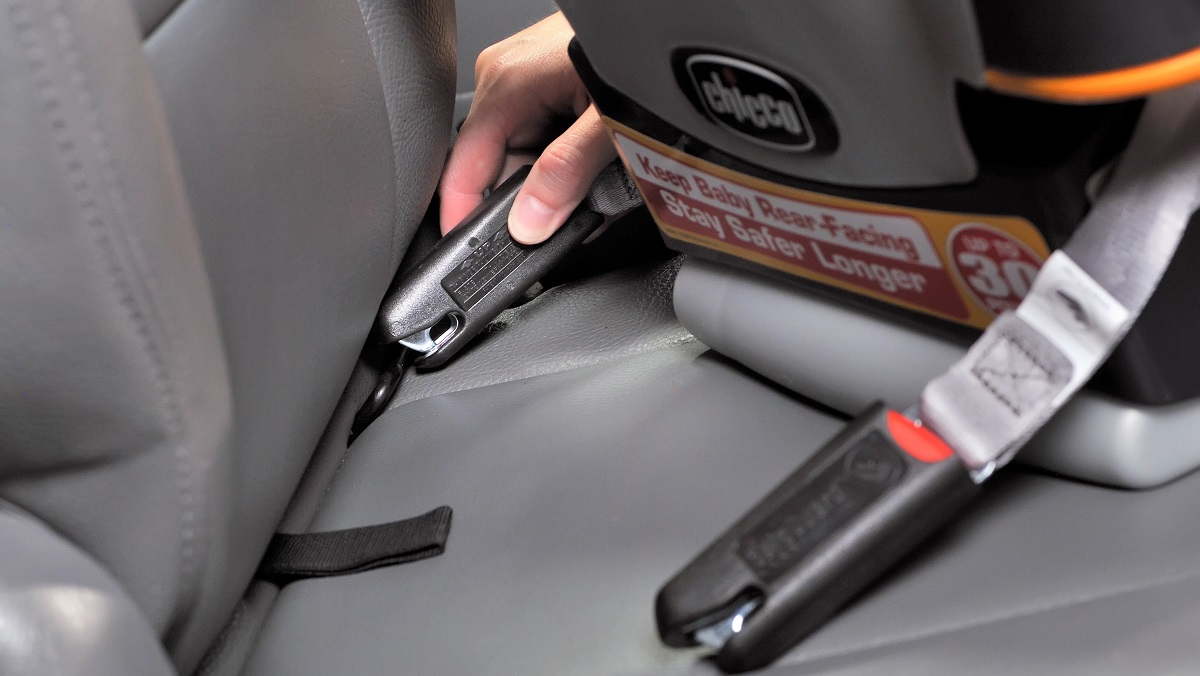Home>Maintenance & Safety>Child & Elderly Safety at Home>When Can A Child Stop Using A Booster Seat In Georgia?


Child & Elderly Safety at Home
When Can A Child Stop Using A Booster Seat In Georgia?
Modified: August 27, 2024
In Georgia, learn the age and height requirements for when a child can safely stop using a booster seat. Ensure child and elderly safety at home.
(Many of the links in this article redirect to a specific reviewed product. Your purchase of these products through affiliate links helps to generate commission for Storables.com, at no extra cost. Learn more)
Introduction
Ensuring the safety of children while traveling in vehicles is a top priority for parents and caregivers. In Georgia, as in many other states, specific laws and guidelines are in place to protect young passengers. One crucial aspect of child passenger safety is the use of booster seats, which are designed to provide additional protection for children who have outgrown their forward-facing car seats but are not yet ready to use a regular seat belt.
Understanding the regulations and best practices regarding booster seat usage is essential for parents, guardians, and anyone responsible for transporting children in Georgia. By staying informed and compliant with the state's laws, individuals can help reduce the risk of injuries and ensure that young passengers are adequately protected in the event of a vehicle collision.
In this comprehensive guide, we will delve into Georgia's booster seat laws, explore the factors that determine when a child can transition from a booster seat to a regular seat belt, and discuss any exceptions to the booster seat requirements. By the end of this article, readers will have a clear understanding of the regulations governing booster seat usage in Georgia and the best strategies for keeping young passengers safe on the road.
Key Takeaways:
- Keep your child in a booster seat until they’re 8 years old or 4 feet 9 inches tall in Georgia. Make sure the seat belt fits properly before transitioning to a regular seat belt.
- Exceptions to the booster seat law exist for medical conditions, vehicle limitations, and unforeseen circumstances. Prioritize child safety and seek guidance when evaluating the need for exemptions.
Georgia Booster Seat Laws
In Georgia, the law mandates the use of booster seats for children under the age of 8 or until they reach a height of 4 feet 9 inches. This regulation is crucial for ensuring the safety of young passengers while traveling in motor vehicles. Booster seats are specifically designed to elevate children to a height where the vehicle's seat belt fits them properly, providing essential protection in the event of a crash.
The Georgia Department of Public Health emphasizes the importance of using booster seats to reduce the risk of injury for children who have outgrown their forward-facing car seats but are not yet tall enough to use a regular seat belt. By adhering to these regulations, caregivers and parents can help mitigate the potential dangers associated with improper restraint systems for young passengers.
It's important to note that Georgia's booster seat laws are in line with best practices recommended by safety experts and organizations such as the National Highway Traffic Safety Administration (NHTSA). These guidelines are rooted in extensive research and are aimed at safeguarding children during car travel, where the risk of injury is significantly higher without appropriate safety measures.
By understanding and complying with Georgia's booster seat laws, caregivers and parents can play a pivotal role in promoting child passenger safety. This proactive approach not only aligns with legal requirements but also reflects a commitment to prioritizing the well-being of young passengers on the road.
In summary, Georgia's booster seat laws are designed to protect children by ensuring that they are secured in appropriate restraint systems until they reach a certain age or height. By following these regulations, caregivers and parents can contribute to creating a safer environment for children traveling in motor vehicles throughout the state.
When Can a Child Stop Using a Booster Seat?
Determining when a child can transition from using a booster seat to a regular seat belt is a critical consideration for parents and caregivers. While Georgia law specifies the age and height requirements for booster seat usage, it's equally important to understand the developmental and physical factors that influence this transition.
According to safety experts, including the American Academy of Pediatrics, a child can generally stop using a booster seat when they meet the following criteria:
-
Age and Height: In Georgia, the law stipulates that children should use a booster seat until they are 8 years old or reach a height of 4 feet 9 inches. However, it's essential to recognize that these are minimum requirements, and individual children may need to continue using a booster seat beyond these benchmarks.
-
Proper Seat Belt Fit: A key indicator that a child is ready to transition from a booster seat is when the vehicle's seat belt fits them correctly. This means that the lap belt lies snugly across the upper thighs, not the stomach, and the shoulder belt crosses the chest and shoulder, not the neck or face. When a child can comfortably and safely use a regular seat belt without the need for a booster seat, they may be ready for this transition.
-
Maturity and Behavior: Beyond meeting the age and height requirements, a child's maturity and ability to sit properly in a vehicle without slouching or leaning forward are crucial factors. If a child can maintain proper seating posture and refrain from fidgeting or moving out of position while the vehicle is in motion, they may be ready to transition to a regular seat belt.
-
Parental Assessment: Caregivers and parents play a vital role in assessing their child's readiness to transition from a booster seat. Observing how the child sits in the vehicle, their comfort level, and their ability to follow safety instructions can provide valuable insights into whether they are prepared to use a regular seat belt.
It's important to emphasize that the decision to transition a child from a booster seat to a regular seat belt should prioritize safety above all else. While the law provides specific age and height guidelines, parents and caregivers should consider the individual needs and developmental readiness of their child before making this transition.
By understanding the multifaceted considerations involved in determining when a child can stop using a booster seat, parents and caregivers can make informed decisions that prioritize the safety and well-being of young passengers on the road.
Exceptions to the Booster Seat Law
While Georgia's booster seat laws establish crucial guidelines for child passenger safety, there are certain exceptions that warrant consideration. These exceptions acknowledge unique circumstances where the standard booster seat requirements may not apply, yet still prioritize the safety of young passengers. It's important for parents, caregivers, and individuals responsible for transporting children to be aware of these exceptions and understand how they may impact booster seat usage.
Medical Exemptions
In some cases, a child's medical condition or physical characteristics may necessitate an exemption from the standard booster seat requirements. Certain medical conditions or developmental challenges may affect a child's ability to use a booster seat effectively or safely. In such instances, a medical professional's assessment and recommendation play a crucial role in determining whether a child qualifies for a medical exemption from the booster seat law. It's essential for parents and caregivers to consult with healthcare providers to understand if their child's medical circumstances warrant an exemption from the standard booster seat regulations.
Vehicle Exemptions
Another consideration involves specific vehicle configurations that may impact the feasibility of using a booster seat. Some vehicles, particularly older models or certain types of vehicles, may present challenges in securely installing and utilizing booster seats. In such cases, the design or layout of the vehicle may not accommodate the proper installation and functionality of a booster seat, potentially warranting an exemption from the standard requirements. Caregivers and parents should assess whether their vehicle's design or features present obstacles to safely using a booster seat and seek guidance on alternative safety measures if exemptions are deemed necessary.
Unforeseen Circumstances
Unforeseen situations, such as emergency travel or temporary vehicle arrangements, may also prompt the need for exceptions to the booster seat law. While consistent adherence to booster seat regulations is paramount, certain unexpected scenarios, such as sudden travel needs or vehicle replacements, may temporarily challenge the ability to comply with standard requirements. In such cases, caregivers and parents should prioritize implementing alternative safety measures to protect young passengers while striving to return to full compliance with booster seat regulations as soon as possible.
By recognizing and understanding these exceptions to the booster seat law, individuals responsible for child passenger safety can navigate unique circumstances while upholding the overarching goal of safeguarding young passengers during vehicle travel. It's essential to approach these exceptions with careful consideration for the well-being of children and to seek appropriate guidance and support when evaluating the need for exemptions from standard booster seat requirements.
In Georgia, a child can stop using a booster seat when they are at least 8 years old or 4’9″ tall, as long as the vehicle’s seat belt fits properly. It’s important to follow the state’s guidelines to ensure the child’s safety.
Conclusion
In conclusion, prioritizing child safety during vehicle travel is a collective responsibility that encompasses adherence to Georgia's booster seat laws, understanding the factors influencing the transition from a booster seat to a regular seat belt, and recognizing exceptions that may warrant deviations from standard regulations. By embracing these principles, parents, caregivers, and individuals responsible for transporting children can significantly contribute to creating a safer environment for young passengers on the road.
Georgia's booster seat laws serve as a crucial framework for promoting child passenger safety, emphasizing the use of booster seats for children under the age of 8 or until they reach a height of 4 feet 9 inches. These regulations align with best practices recommended by safety experts and organizations, reflecting a commitment to mitigating the risks associated with improper restraint systems for young passengers.
Understanding when a child can transition from a booster seat to a regular seat belt involves a multifaceted assessment, considering age, height, proper seat belt fit, maturity, behavior, and parental evaluation. By prioritizing safety and individual developmental readiness, parents and caregivers can make informed decisions that safeguard young passengers during vehicle travel.
Moreover, recognizing exceptions to the booster seat law, such as medical exemptions, vehicle limitations, and unforeseen circumstances, underscores the importance of flexibility and discernment in ensuring child safety. These exceptions provide a nuanced perspective, acknowledging unique situations where standard regulations may not fully align with the well-being of young passengers, thereby necessitating careful consideration and appropriate guidance.
Ultimately, the comprehensive understanding of Georgia's booster seat laws, the factors influencing the transition from a booster seat to a regular seat belt, and the recognition of exceptions collectively empower individuals to prioritize child safety with diligence and compassion. By upholding these principles, caregivers and parents can play a pivotal role in fostering a culture of safety and protection for young passengers, thereby contributing to a safer and more secure environment for children traveling in motor vehicles throughout Georgia.
Frequently Asked Questions about When Can A Child Stop Using A Booster Seat In Georgia?
Was this page helpful?
At Storables.com, we guarantee accurate and reliable information. Our content, validated by Expert Board Contributors, is crafted following stringent Editorial Policies. We're committed to providing you with well-researched, expert-backed insights for all your informational needs.















0 thoughts on “When Can A Child Stop Using A Booster Seat In Georgia?”